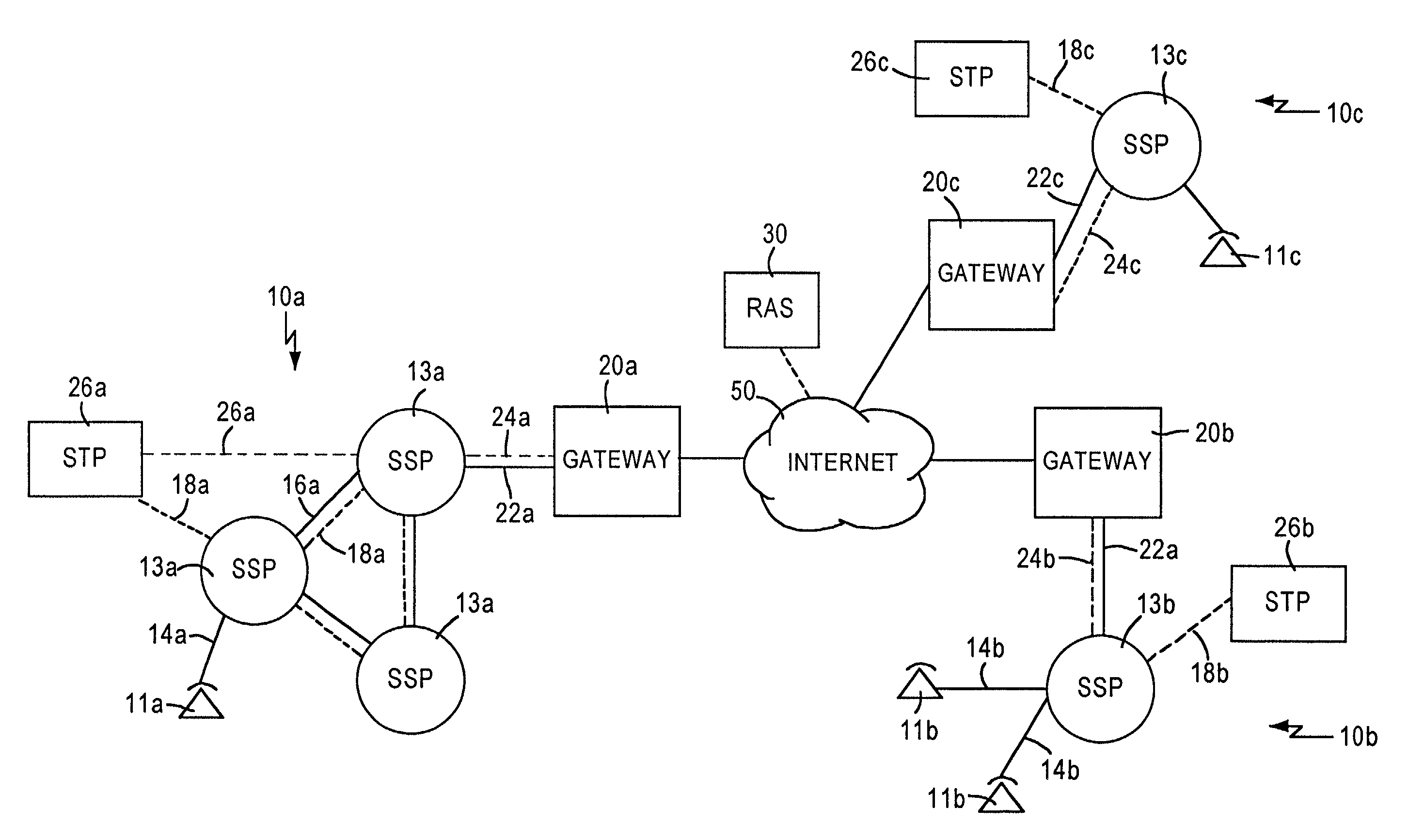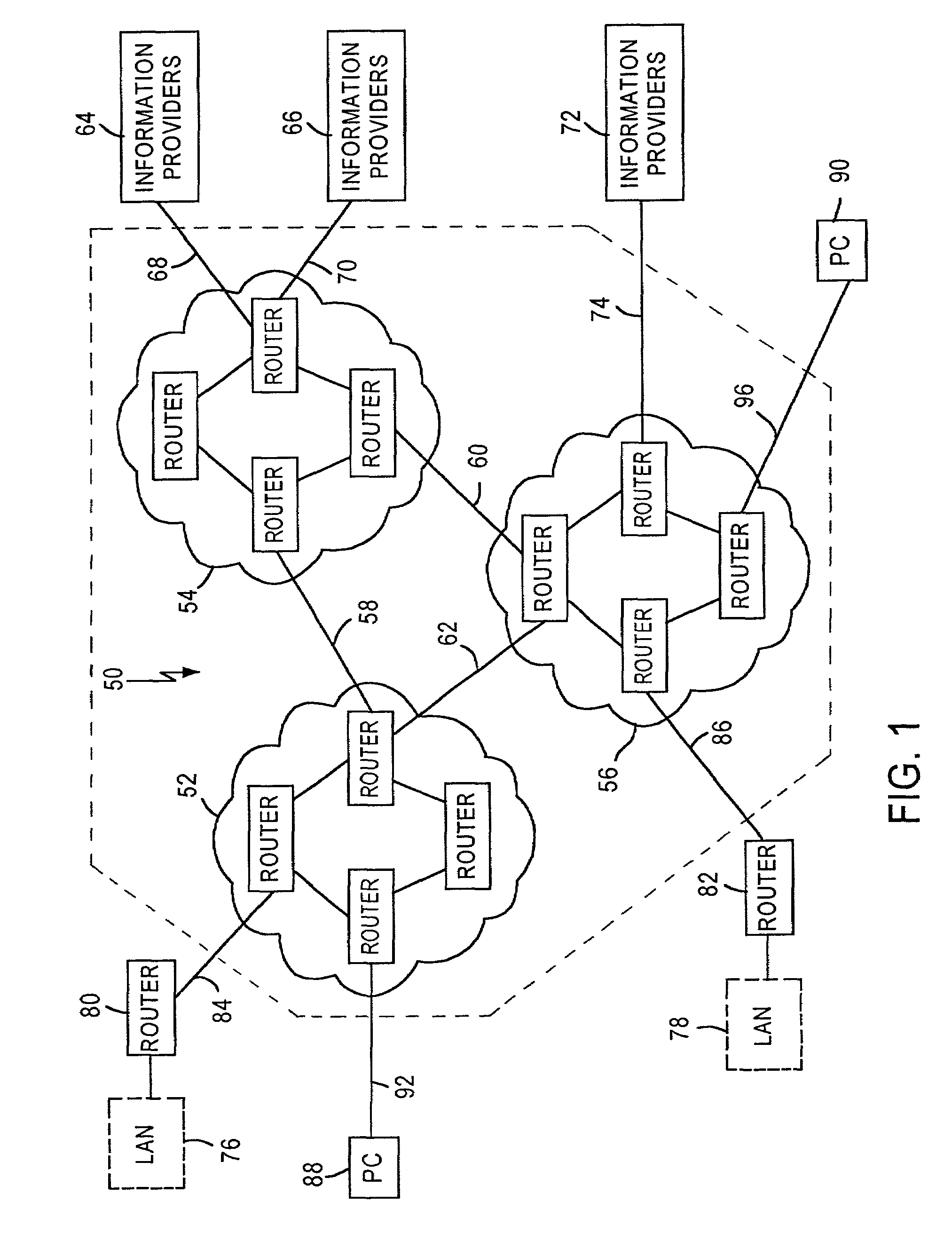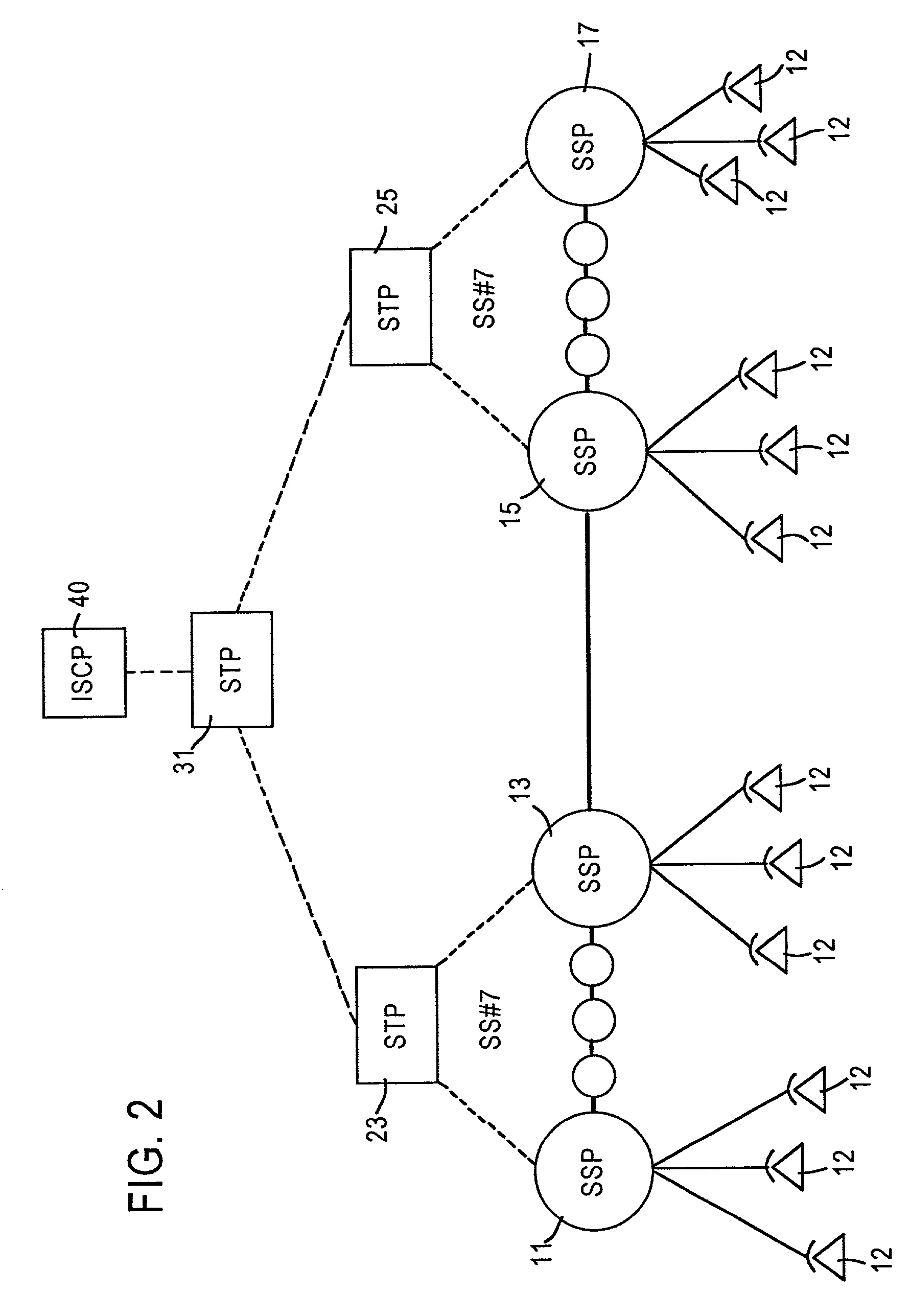Transport of caller identification information through diverse communication networks
a communication network and caller identification technology, applied in the field of telecommunications networks, can solve the problems of inability to provide the appropriate caller identification information to the destination public switched telephone network, and the caller would be subject to receiving useless information
- Summary
- Abstract
- Description
- Claims
- Application Information
AI Technical Summary
Benefits of technology
Problems solved by technology
Method used
Image
Examples
Embodiment Construction
[0044]FIG. 2 is a depiction of the architectural environment of a switched telephone network that is considerably simplified for explanation purposes. The full network and operating environment for a PSTN comprises multiple central offices, diverse interconnections, and provisions for reliability through redundancy, all of which need not be shown for developing an understanding of the invention. Service Switching Points (SSPs) 11, 13, 15, 17 represent central office (CO) switching systems that are appropriately equipped programmable switches present in the telephone network. Subscriber lines individually connect SSPs to subscriber premises at which locations telephones 12 or other communication devices are connected. In the well known Advanced Intelligent Network (AIN), the SSPs recognize AIN type calls, launch queries to the ISCP and receive commands and data from the ISCP to further process the AIN calls. In the illustrated embodiment, the CO-SSPs are end offices.
[0045]SSP capable...
PUM
 Login to View More
Login to View More Abstract
Description
Claims
Application Information
 Login to View More
Login to View More - R&D
- Intellectual Property
- Life Sciences
- Materials
- Tech Scout
- Unparalleled Data Quality
- Higher Quality Content
- 60% Fewer Hallucinations
Browse by: Latest US Patents, China's latest patents, Technical Efficacy Thesaurus, Application Domain, Technology Topic, Popular Technical Reports.
© 2025 PatSnap. All rights reserved.Legal|Privacy policy|Modern Slavery Act Transparency Statement|Sitemap|About US| Contact US: help@patsnap.com



